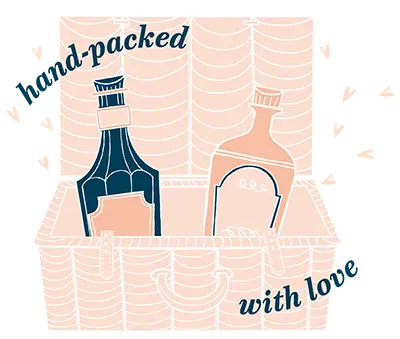Ready for an interesting beer fact? Beer is one of the most consumed drinks on the planet, coming third only to water and tea.
Whether you’re partial to a pint or two and want to learn more, or you’re looking to buy a truly mouth-watering gift for a beer connoisseur (especially in time for Father's Day), let us tell you all about what beer is, and the variety of tastes, flavours and experiences you can expect from its many, many glorious forms.

Different types of beer
You can categorise beer into two different types: lager or ale.
Many people know which drinks fall under which category, but might not know that the definition refers to the type of yeast that is used during the fermentation process, not the colour or flavour.
All beer is fermented from grain, but ales are created using yeast that ferments at the top. Lager is made with yeast that ferments at the bottom of the mixture.
Furthermore, yeast used in the process of making ale has a higher tolerance to alcohol than that used for lager. This is why ales are capable of having a higher alcohol content than lagers. In comparison, bottom-fermenting yeast (used to make lager) has a lower tolerance to alcohol and needs to ferment at cooler temperatures.
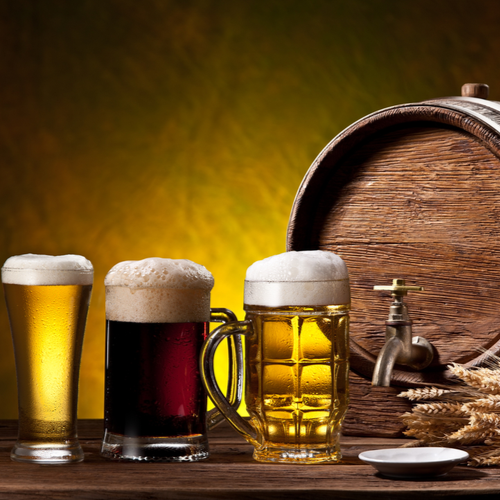
Craft beer - who is the connoisseur in your life?
Before we go any further, let’s take a second to talk about ‘craft beer’.
It’s a phrase you’ll hear often but isn’t always fully understood.
Put simply, a craft beer is a product of a craft brewery, which tends to be an independently owned brewery that produces beer on a small scale. The rules of what is and what isn’t a craft beer are slightly fuzzy, but the basic overview is that it is commonly brewed in a small, independent brewery. In other words, it is dependent on the beer brewing process rather than the taste.
We love craft beer here at hampers because it means supporting small independent businesses, as well as social enterprises.
More beer varieties and flavours
Lagers
Now that we have taken care of the basic science behind the humble beer, we can explore some of the different flavours and categories.
To go through all the different types of beer would take some time, considering there are more than one hundred of them, but we can most certainly take a look at the main variations.
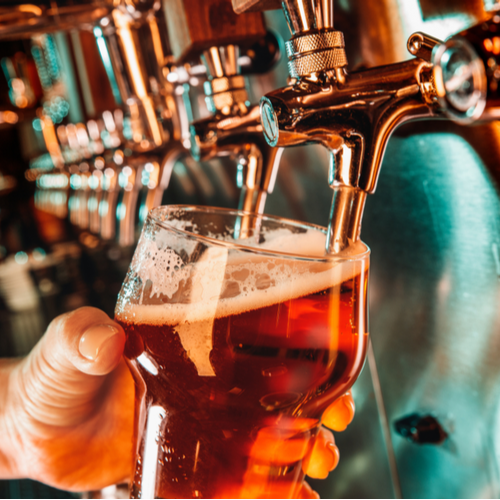
Pale lagers
Pale lagers are named so because they are lighter in colour, ranging from straw to amber. They are crisp in flavour.
Pale lager are carbonated and tend to be refreshing as they are light on the palate. They are a great entry beer for those who don’t tend to drink it that often. Pale lager is the most popular type of beer drunk around the world and is the main product sold by many of the top worldwide brands, including the likes of Heineken and Budweiser.
These light lagers tend to go well with salads, burgers or spicy food.
If your dad or partner is partial to a flavoursome curry with a complementary cold lager to the side, then do check out our new Curry Night Indian Beer Hamper - perfect for Father's Day, Dad's birthday or as a gift for him, for any of the special men in your life.
Pilsners
Pilsners are also a type of pale lager, but whereas pale lagers are said to originate from Germany, pilsners come from the Czech Republic.
They are similar to pale lager, but pilsners are generally more carbonated and have a fuller, more aromatic flavour, due to the addition of Saaz hops.
Essentially, if you are still looking for a light beer but want one with a bit more flavour, then Pilsner could be your go-to. Within this category, you have German-style pilsners (e.g. Becks) which are paler and crisper, and Czech-style pilsners (such as Staropramen) which are a little darker and more bitter.
Pilsners are very flexible to pair, similar to foods that suit pale lagers, but they also pair well with cheese.
The Craft Beer & Cheese Hamper covers all bases, supplying great beers from Freedom Brewery with a pilsner, pale lager and Helles. Inside this wonderful gift, is a delicious selection of crisps, crackers vintage cheddar and snacking cheese. This hamper is ideal for those looking for craft beer gifts for a birthday, anniversary or Father's Day.
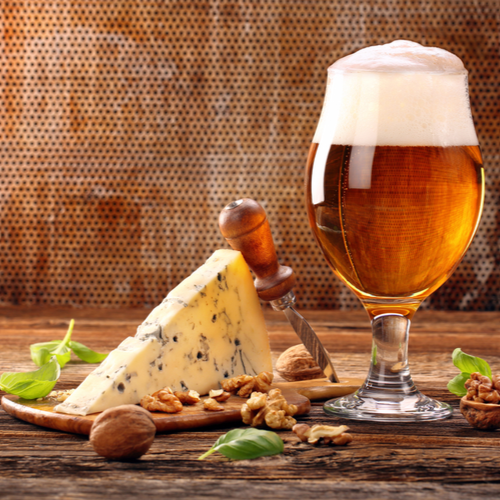
Dark lager
Not all lagers are light, crisp and refreshing, however. This brings us neatly on to dark lager.
As you might expect, these are darker in colour than your pale lagers and pilsners (ranging from shades of amber to dark red) but tend to be malty and smooth and have smoky caramel flavours. Dark lagers are best paired with hearty, traditional European dishes, including pizza, burgers and 'bangers & mash'.
Ales
The world of ales is even more expansive and convoluted than that of lager, with more than 70 separate categories!
We’re here to guide you through the main, better-known types.
Indian Pale Ale (IPA)
Let’s start with an ale that has seen a recent rise in popularity, and can be found in most bars and pubs up and down the country: Indian Pale Ale (more commonly known as IPA beer).
While there are different categories of IPA – English IPA or West Coast IPA, for example – they all boast the same qualities.
IPAs tend to be bitter, but are balanced out by characteristic herbal, citrus or fruity flavours, and have a higher alcohol percentage than other lagers and ales. Because of the flavours, IPAs are a decent starting point for anyone looking to get into real ale craft beer.
Pale Ales
Pale ales are, rather confusingly, slightly different to IPAs in that they are still generally hoppy but less fruity than IPAs, with a lower alcohol content as well.
Golden and amber ales are an offset of pale ales and can be appealing to first-time ale drinkers because of their low alcohol content and similarity in taste to lagers.
The colours range from amber to gold and have notes of sweet caramel flavours without being too overpowering and, as such, make for excellent palate cleansers to strong-flavoured foods.
If you need a great ale gift, then look no further than our Real Ale Hamper - the perfect gift for him this Father's Day or for an upcoming special birthday for the man in your life. There are a trio of ales from Loose Cannon, including their original brew, "Abingdon Bridge", their award-winning session beer, "Gunners Gold", and last but not least, "Bombshell". This is a gift basket packed full of delights.
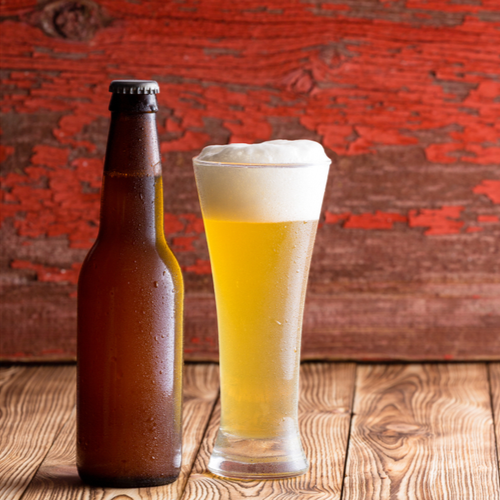
Brown Ales, Porters and Stouts
Opt for a darker colour and deeper flavour and you’ll arrive at brown ales, porters and stouts.
Brown ales are darker than their pale counterparts and tend to have flavours akin to caramel, with toasty, malty overtones. They have mid-range alcohol content and bitterness, with the flavours perhaps too overpowering for first-time ale drinkers. Possibly the most famous example of a brown ale is the Newcastle Brown.
Stouts are darker still but tend to be full-bodied and sweet, with flavours reminiscent of coffee-and-cream or sweet espresso, with Guinness the most celebrated example of this. While sweet, the flavours are rather mild. The hints of coffee and chocolate lend themselves best to being paired with chocolate truffles, chocolate mousse, or lobster and shellfish.
Porters are similar to stout in their dark colour and roasted flavour, but they differ in the fact that they have a crisper finish. Porters originated in London and, as such, have historically been hugely popular in the capital, with the likes of Fuller’s London Porter flying the flag.
Does anyone else feel like they need a drink, by now?
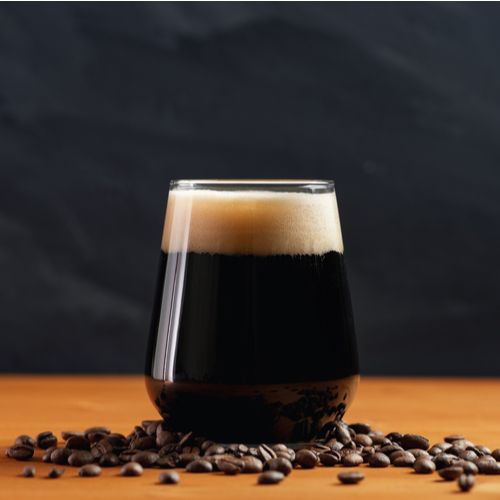
Belgian-style beer
We have covered much of the expansive world of beer, looking at many of the most notable types of lager and ale, but it is also worth mentioning Belgian-style beer.
Belgian-style beers naturally originate from the region, and are well known for their spicy, fruity and sweet flavours and incredibly high alcohol content – seriously, if you ever go into a Belgian bar, check the strength of your drink before ordering a second! Wheat beer is made using wheat as the malt ingredient, which gives it a lower alcohol content and lighter colour. These beverages buck the trend of many beers, in the fact that they are often enjoyed with a slice of fruit, and are ideal for those looking for a casual drink.

Looking for the ideal treat for the beer lover?
How’s that for a bit of a lesson in all things beer?
We think it's so important when choosing a gift for someone who loves their beer that you understand what is available. That way you can choose something you know is a favourite or introduce them to a whole new sector of the world of beer.
For a range of beer hampers, which make great gifts for Father's Day, your husband's birthday, your best friend's wedding day and more...do explore our full range of beer hampers and gift boxes. Within each, we proudly feature beers from a range of British breweries, all with great innovative approaches to beer making and brewing...including Jeremy Clarkson's very own Hawkstone Brewery and the wonderful social enterprise Tap Social, in our Craft Beer Hamper







